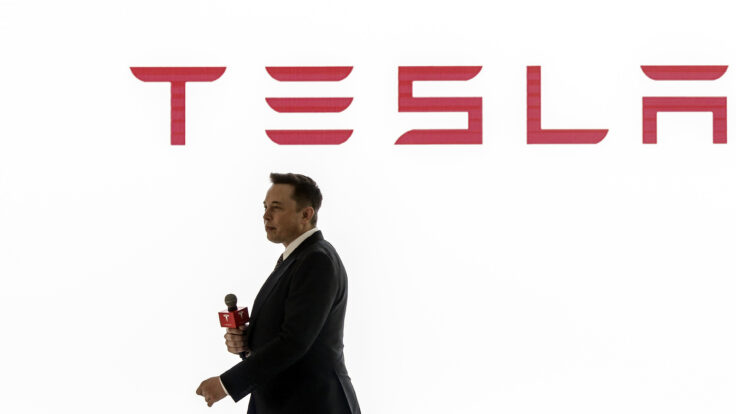|
Welcome back to Dry Powder.
I'm William D. Cohan, a best-selling author and former senior M&A banker. Thanks for your interest in Puck, our new media company covering the intersection of Wall Street, Washington, Silicon Valley, and Hollywood.
As always, if you're enjoying these previews of my private email, consider subscribing or sharing the subscription link with a friend. There's no better holiday gift for yourself, or for a loved one, than access to the inside conversation from experts and elite journalists like Matt Belloni, Dylan Byers, Peter Hamby, Julia Ioffe, Teddy Schleifer, and more. To wit: Today I'm sharing my lunch conversation with Morgan Stanley C.E.O. James Gorman, about his rivalry with Jamie Dimon and the succession question, among others.
Enjoy, Bill
The C.E.O. of Morgan Stanley dishes on Goldman and succession, among other topics, over bespoke sushi. A few weeks ago, before the recent Omicron spike, James Gorman invited me to lunch, high atop Morgan Stanley’s headquarters, just north of Times Square in Manhattan, for a conversation about his firm, the markets, what’s worrying him these days and when he’ll name his successor. Gorman, the 63-year-old Aussie C.E.O. of the firm, had the sushi. I had a Caesar salad with grilled shrimp. He seemed in fine fettle, and chatty, after a long, challenging, and highly successful year.
Gorman and I have a little history together. We both graduated from Columbia Business School in the class of 1987, five months before Black Monday wiped out nearly 23 percent of the value on the Dow Jones Industrial Average. Having been elected class speaker by my peers, I headed to GE Capital, to finance leveraged buyouts, and then to Lazard, Merrill Lynch and JPMorganChase, as an M&A banker. Gorman, for his part, joined McKinsey, where eventually he became a senior partner. It was an incredible accomplishment for a young man whose father had both grown up in the Outback and been homeschooled until he was a senior.
And, of course, it was only the start of his stratospheric ascent. One of Gorman’s most important clients at McKinsey was Merrill Lynch, the once independent investment bank that would eventually get sucked into Bank of America during the 2008 financial crisis. In 1999, Gorman left McKinsey for Merrill, in the newly created position of chief marketing officer and as a member of the firm’s management committee. (I had left Merrill by then.) Two years later, Gorman headed up Merrill’s brokerage business, known as the “Thundering Herd” on Wall Street. He was a big success at Merrill.
In February 2006, Gorman joined Morgan Stanley as president and chief operating officer of the bank’s wealth management business, its version of the Thundering Herd. In 2009, he advocated for, and then engineered, the two-step merger between Morgan Stanley’s wealth management business and the giant Smith Barney brokerage that was then part of Citigroup, which had been sent reeling during the financial crisis. Gorman bet that the kinds of recurring revenue that a wealth management business generates would be increasingly important on Wall Street, post Dodd-Frank, because risk-taking inside the Big Banks was going to be greatly curtailed. He was right. From there, Gorman was on a rocket ship to the top of the firm.
Gorman and I didn’t know each other at Columbia, or at all really, until he became the C.E.O. of Morgan Stanley, in January 2010. By then, I had been relieved of my Wall Street career and had decided to return to journalism, writing books and articles about finance, among other topics. His arc, both of his career and also his emergence in Morgan Stanley’s august, 86-year history, has always fascinated me. He took over the firm soon after the dust had started settling on the worst of the financial crisis, which almost certainly would have dragged Morgan Stanley with it had the investment bank, along with Goldman Sachs, not been allowed to convert itself into a bank holding company, giving it access to the Fed’s borrowing window. Soon thereafter, Morgan Stanley obtained a $9 billion investment from Mitsubishi UFJ Financial Group, in exchange for preferred stock convertible into 21 percent of the fully diluted Morgan Stanley shares. (The Mitsubishi investment has become legendary on Wall Street. The Japanese bank remains by far the largest shareholder in Morgan Stanley.) During Gorman’s tenure atop Morgan Stanley, its market capitalization has increased to around $175 billion, from around $40 billion, leaving longtime competitor Goldman Sachs—market cap around $125 billion—in the dust, much to Gorman’s delight.
Over lunch, Gorman told me that he couldn’t care less about Goldman Sachs these days. “Somebody asked me one morning, ‘You must get out of bed every day and think about Goldman Sachs,’” he recalled. “I said, ‘I don't.’ They said, ‘How could you not? They're a major competitor.’ I said, ‘Because I get out of bed every morning and think about Morgan Stanley.’ We’re here to win...”
FOUR STORIES WE'RE TALKING ABOUT Stallone is just the latest star to cash out, via some clever financing, on his life's work. MATTHEW BELLONI Joe Biden's staggering unpopularity among younger voters suggests that Democrats don't have any idea what matters to their kids. PETER HAMBY Notes on Silicon Valley's Biden beef, the latest tech industry gossip, fundraising, and political power plays. TEDDY SCHLEIFER Notes on the next fiscal crisis, Gorman’s return-to-office pivot, meme SPAC mania, and a ‘Succession’ shout-out. WILLIAM D. COHAN
|
-
Join Puck
Directly Supporting Authors
A new economic model in which writers are also partners in the business.
Personalized Subscriptions
Customize your settings to receive the newsletters you want from the authors you follow.
Stay in the Know
Connect directly with Puck talent through email and exclusive events.











